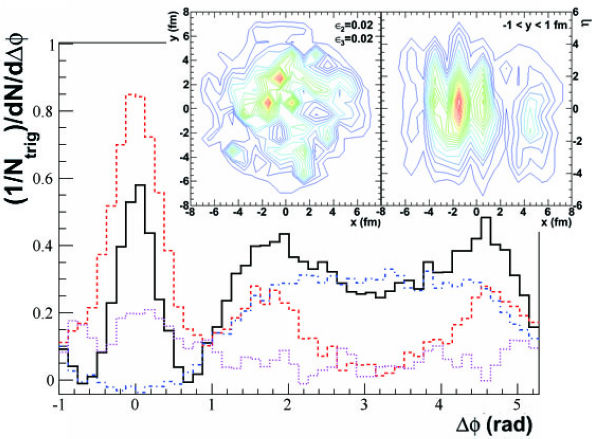






It is a big puzzle why double-peak and ridge structures are observed in dihadron azimuthal correlations in relativistic heavy ion collisions. Dr. Guo-Liang Ma, an associated professor of Shanghai Institute of Applied Physics, Chinese Academy of Sciences, worked on the physical mechanisms and found that many components contribute to the observation by using a multi-phase transport model. The work is published on Physical Review Letters, 106, 162301 (2011).
A series of experimental results indicates that a hot and dense partonic matter (Quark Gluon Plasma) may be created in relativistic heavy ion collisions at the BNL Relativistic Heavy Ion Collider (RHIC). It is very interesting that double-peak and ridge structures are observed simultaneously in dihadron azimuthal correlations. But it is not clear that what is physical origin for these two structures until now. Recently, Dr. Ma worked on it with a multi-phase transport model with initial fluctuation. The simulation results show that the odd order of harmonic flows, especially triangular flow, have a significant contribution to the dihadron azimuthal correlation in central Au+Au collisions. The different initial conditions are used to isolate the contributions from harmonic flows, hot spots, and jet-medium interaction. In addition, hot spot presents a tube structure in longitudinal direction initially, and can be developed into a ridge structure in final state by a strong parton cascade process.
This work provides a hopeful answer to the puzzle, which is an important contribution to the study about multi-particle correlations in relativistic heavy-ion collisions.
This work is in collaboration with Prof. Xin-Nian Wang (Lawrence Berkeley National Laboratory, Berkeley, California, USA). It is supported by Chinese Academy of Sciences, National Natural Science Foundation of China etc.

Initial fluctuation (inserted plot) and final dihadron correlations in relativistic heavy ion collisions